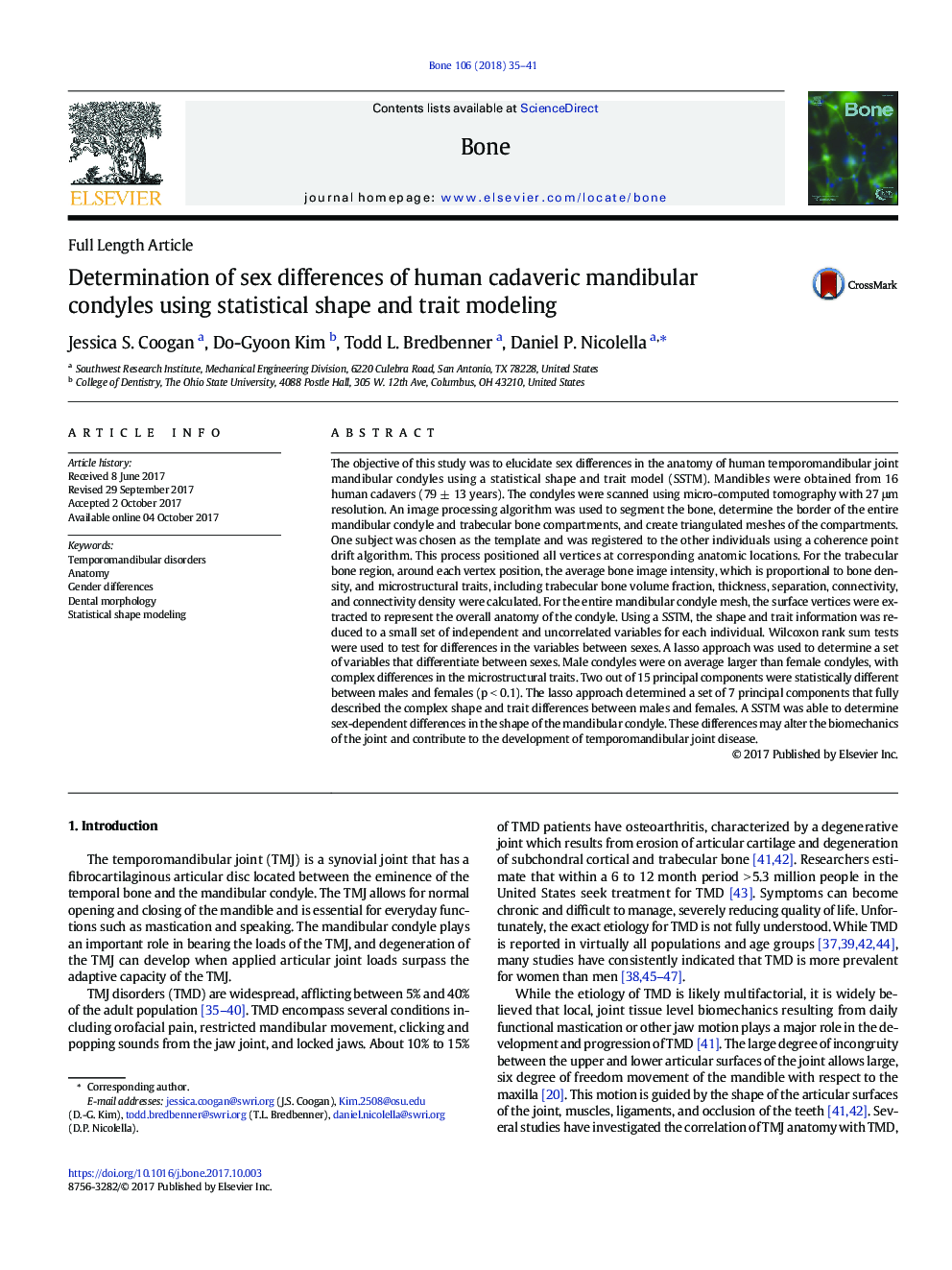| کد مقاله | کد نشریه | سال انتشار | مقاله انگلیسی | نسخه تمام متن |
|---|---|---|---|---|
| 5585090 | 1568113 | 2018 | 7 صفحه PDF | دانلود رایگان |
- Statistical shape modeling was used to investigate the temporomandibular joint.
- Shape and microstructural traits were reduced to a set of uncorrelated variables.
- Complex sex differences were found in both shape and microstructural traits.
- Statistical shape model variables completely described the sex differences.
The objective of this study was to elucidate sex differences in the anatomy of human temporomandibular joint mandibular condyles using a statistical shape and trait model (SSTM). Mandibles were obtained from 16 human cadavers (79 ± 13 years). The condyles were scanned using micro-computed tomography with 27 μm resolution. An image processing algorithm was used to segment the bone, determine the border of the entire mandibular condyle and trabecular bone compartments, and create triangulated meshes of the compartments. One subject was chosen as the template and was registered to the other individuals using a coherence point drift algorithm. This process positioned all vertices at corresponding anatomic locations. For the trabecular bone region, around each vertex position, the average bone image intensity, which is proportional to bone density, and microstructural traits, including trabecular bone volume fraction, thickness, separation, connectivity, and connectivity density were calculated. For the entire mandibular condyle mesh, the surface vertices were extracted to represent the overall anatomy of the condyle. Using a SSTM, the shape and trait information was reduced to a small set of independent and uncorrelated variables for each individual. Wilcoxon rank sum tests were used to test for differences in the variables between sexes. A lasso approach was used to determine a set of variables that differentiate between sexes. Male condyles were on average larger than female condyles, with complex differences in the microstructural traits. Two out of 15 principal components were statistically different between males and females (p < 0.1). The lasso approach determined a set of 7 principal components that fully described the complex shape and trait differences between males and females. A SSTM was able to determine sex-dependent differences in the shape of the mandibular condyle. These differences may alter the biomechanics of the joint and contribute to the development of temporomandibular joint disease.
Journal: Bone - Volume 106, January 2018, Pages 35-41
